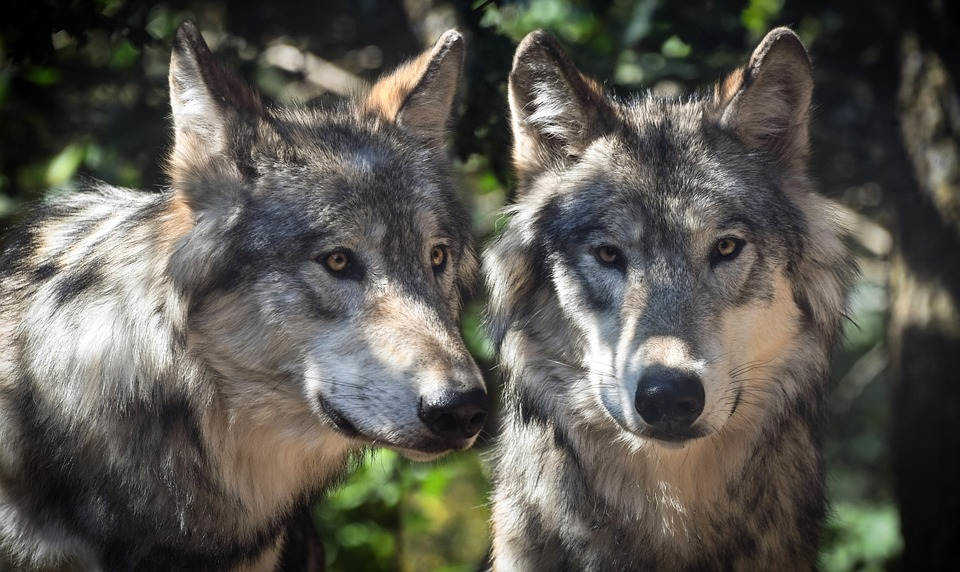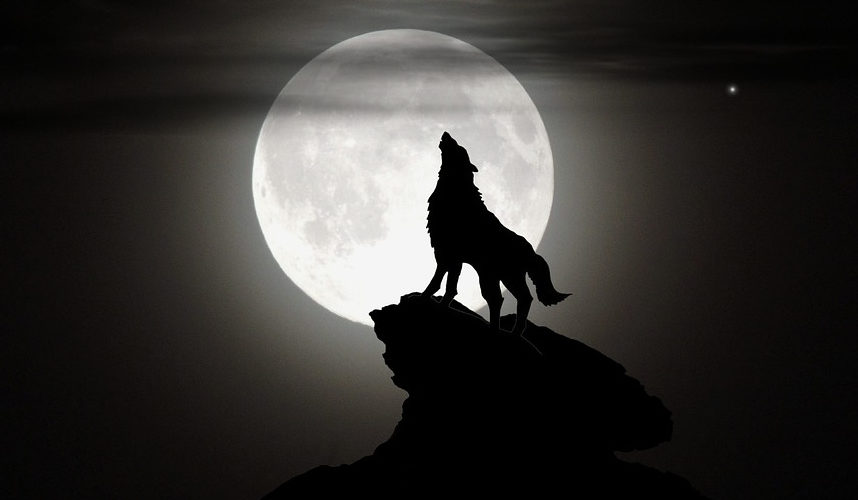
When you’re in a forest in the middle of the night, have you ever thought about what kind of creatures could be living there? Or when you hear a loud noise in the otherwise quiet forest, it feels like it could be anything. One animal that comes to most people’s minds is a wolf, a wolf howling at the full moon in particular. This is the result of seeing this image in lots of different contexts. There are books about wolves howling, it is used in romances and in horror movies, and you can actually hear it in real life. But what is up with that? Before we move further into this article, I want to clear up one thing: Sadly, wolves howling at the full moon is nothing more than a myth. It is true that they can be seen howling at the moon but not for the reasons you might think.
Howling is a natural behavior observed in wolves, displaying a form of communication. These communication forms not only include howling, but also whimpering, barking and growling. Each noise is used in a different context and has multiple meanings. Whimpering can indicate frustration, anxiety or simply friendly interaction, but at the same time, a wolf might whimper to indicate its submission to a dominant wolf. Hearing a wolf bark is very rare and mostly used as an alarm signal when a wolf senses danger, often used by mothers to warn her pups. Another communication noise is growling. This can be observed as a threatening or defensive tool to warn intruders to stay away or to show dominance. Last but not least, there’s the most common heard wolf’s noise, howling. A wolf’s howl can carry up to about 16km, which is nothing in comparison to the size of their territory (as large as 3.000 square km). There are different reasons as to why wolves howl. Since they are highly social animals, they prefer to travel in packs of about 6-10 members but it sometimes happens that the pack splits up, f.e. to hunt, in which case howling is then used to call members of the pack that are further away. When wolves howl, they point their snout towards the sky and howl at a specific pitch in order to reach out to the others to let them know their location and other important information concerning the prey or territory. Among single wolf howls, there is also the pack howl. As already mentioned, wolves have a strong bond within the pack and this can be best seen during pack rallies. A pack rally describes the pack howling together in chorus. There are different meanings to it: It can either be a call to assembly the whole pack, to claim territory, to declare solidarity or a celebration of being alive and together. Since wolves are nocturnal, they sleep during the day and are awake at night. This explains why wolves can be mostly seen howling at the moon, instead of the sun.
These aspects show that it is simply just a coincidence that wolves can be seen “howling at the moon” and the myth is not as mysterious as it might seem, though, it will remain a perfect motive for books and movies.

Sources:
https://nationalzoo.si.edu/animals/news/why-do-wolves-howl-and-other-top-wolf-questions-answered#:~:text=We%20hate%20to%20burst%20your,or%20as%20a%20territorial%20expression. (Smithsonian’s National Zoo & Conservation Biology Institute, December 6th, 2022)
https://kidadl.com/facts/do-wolves-howl-at-the-moon-facts-and-myths-explained-for-kids (Kidadl Team, December 6th, 2022)
https://www.britannica.com/story/why-do-wolves-howl (Cydney Grannan, December 6th, 2022)
https://www.livingwithwolves.org/about-wolves/language/#:~:text=Whines%20and%20whimpers%20often%20indicate,submission%20to%20a%20dominant%20wolf. (Living with Wolves, December 6th, 2022)

